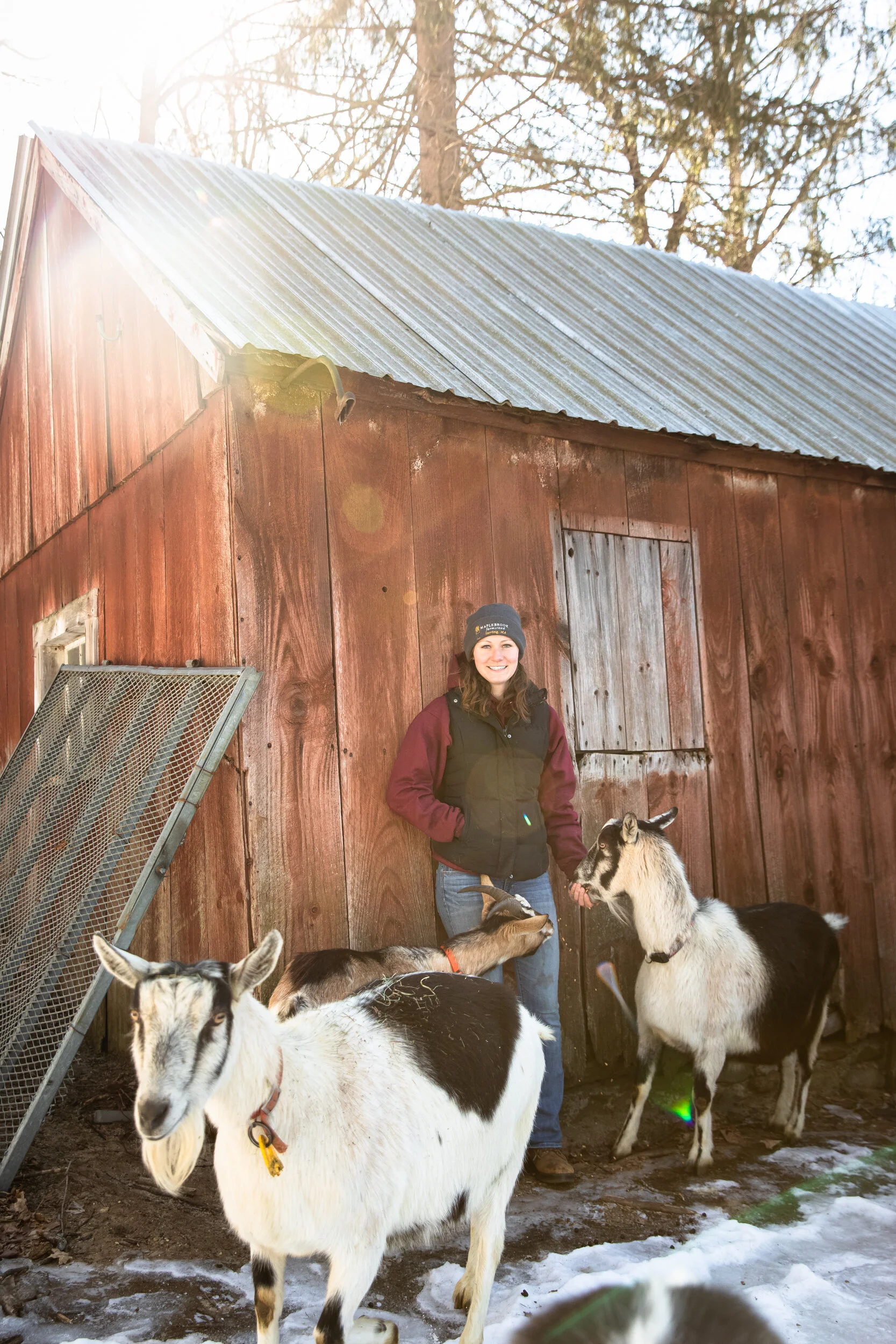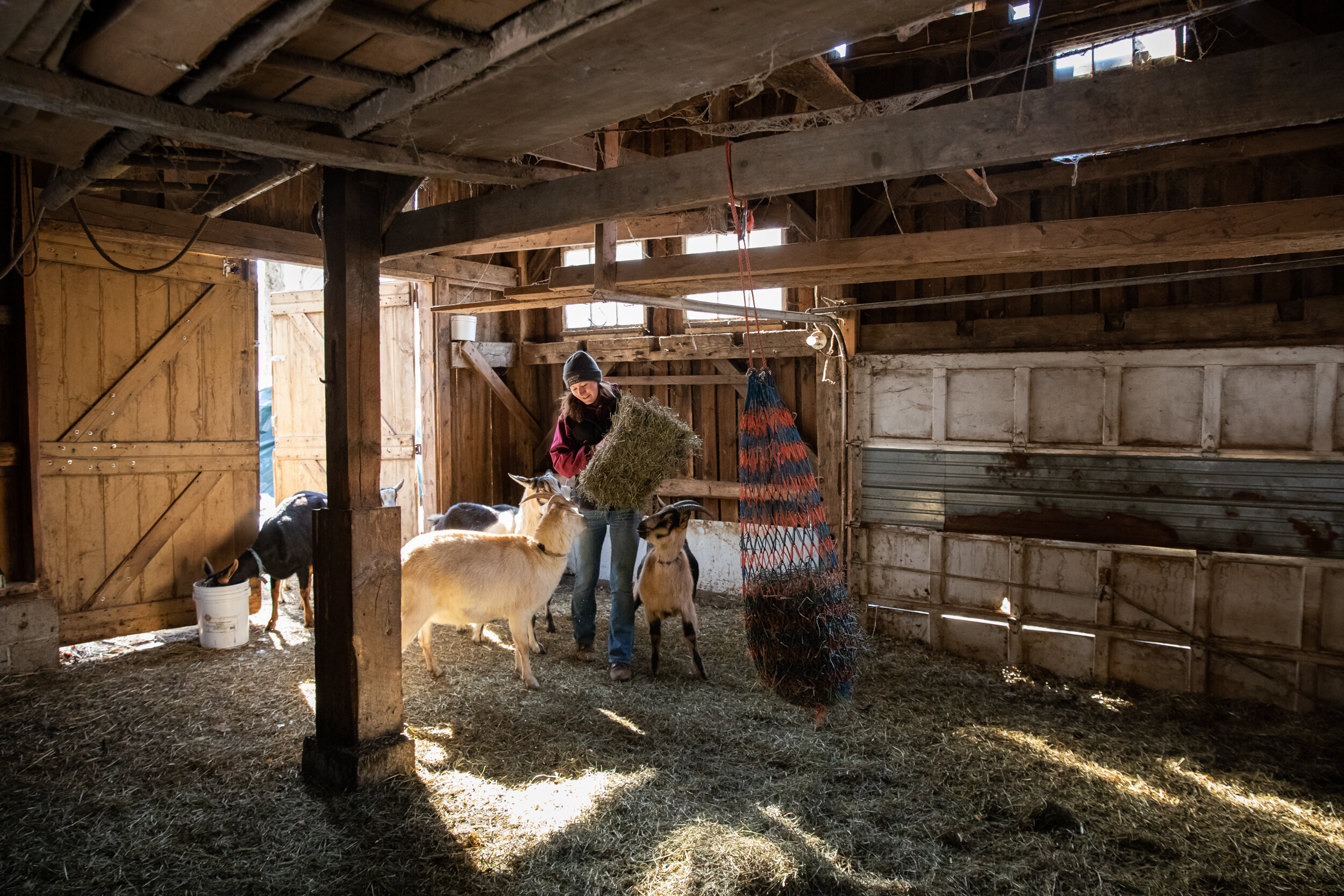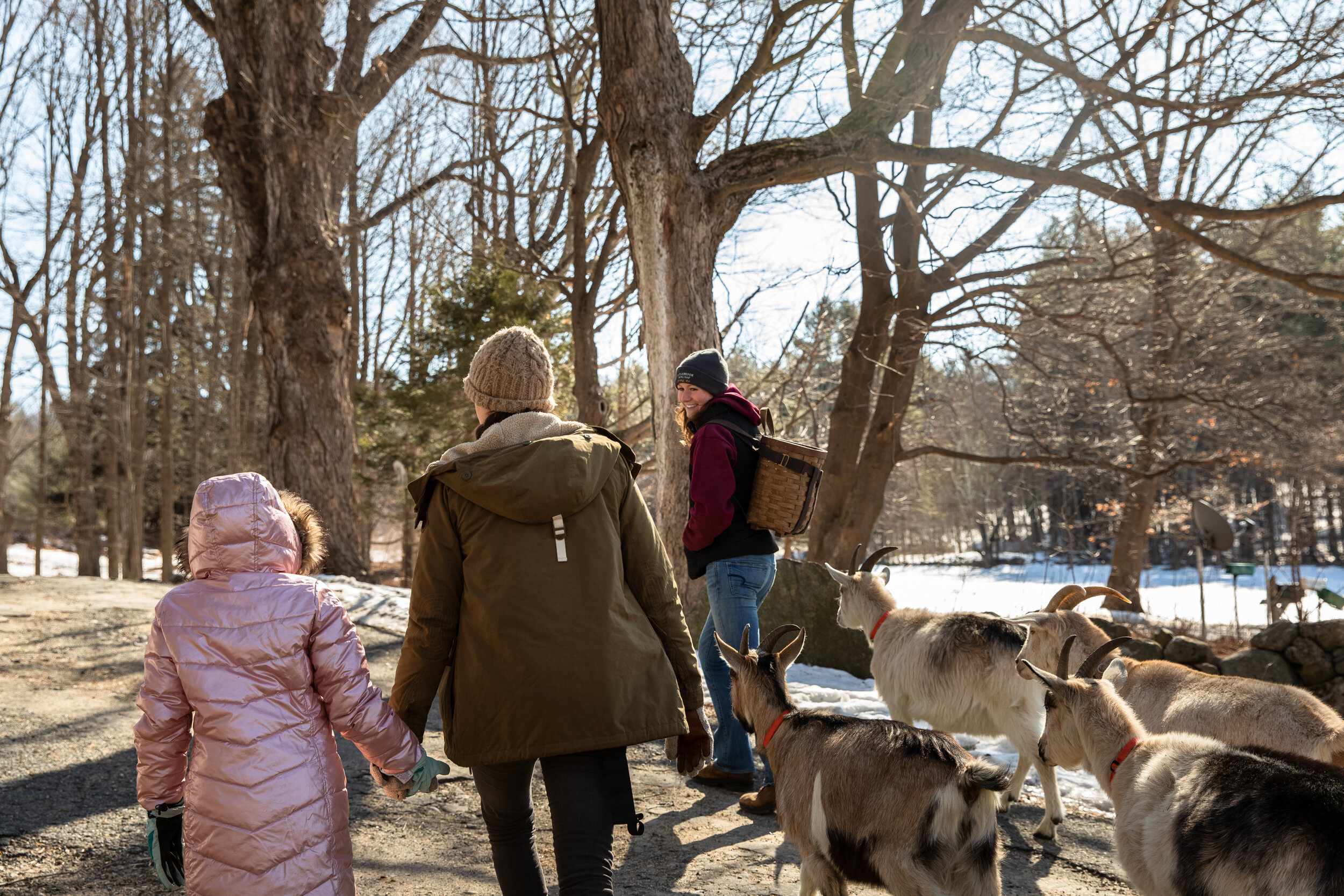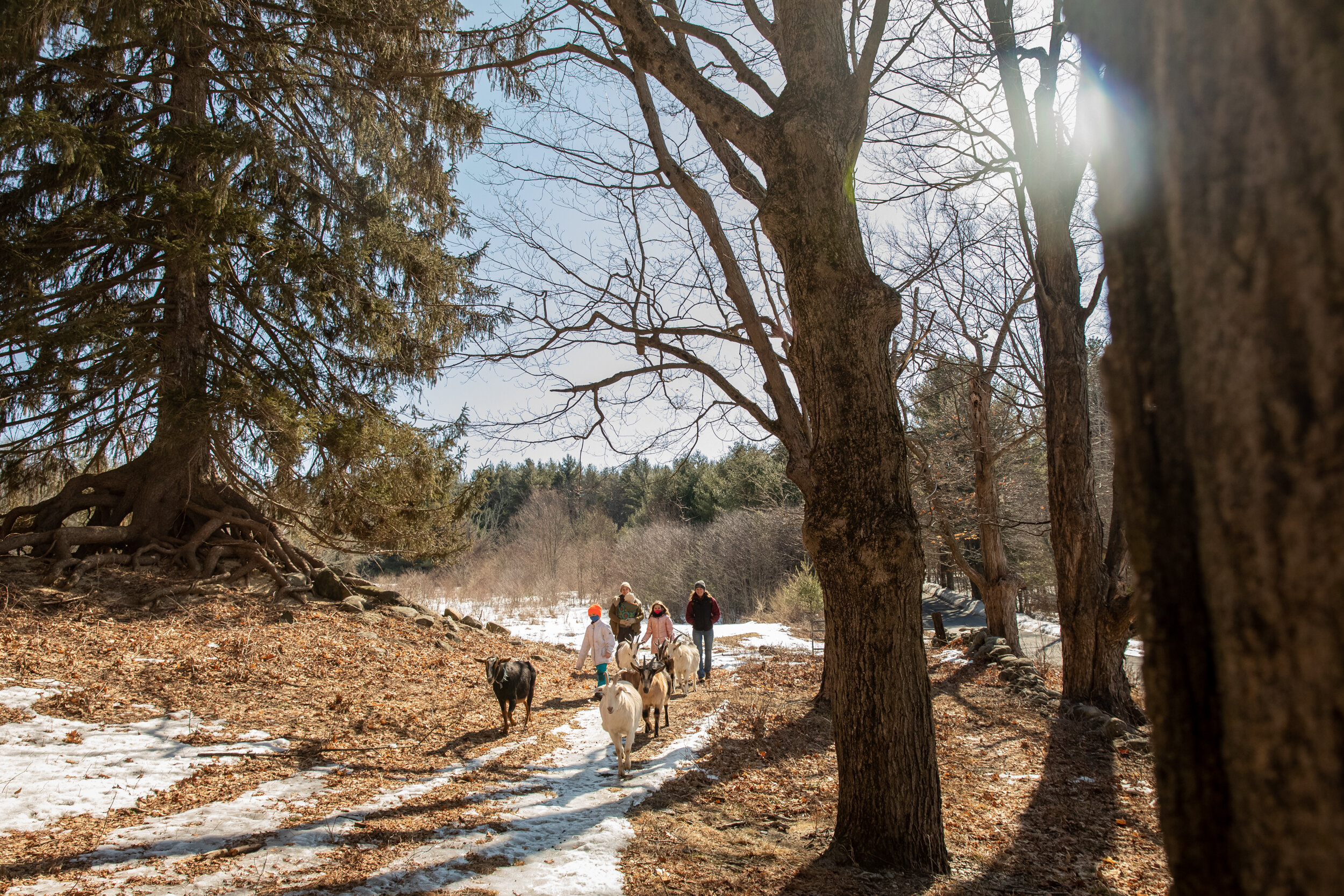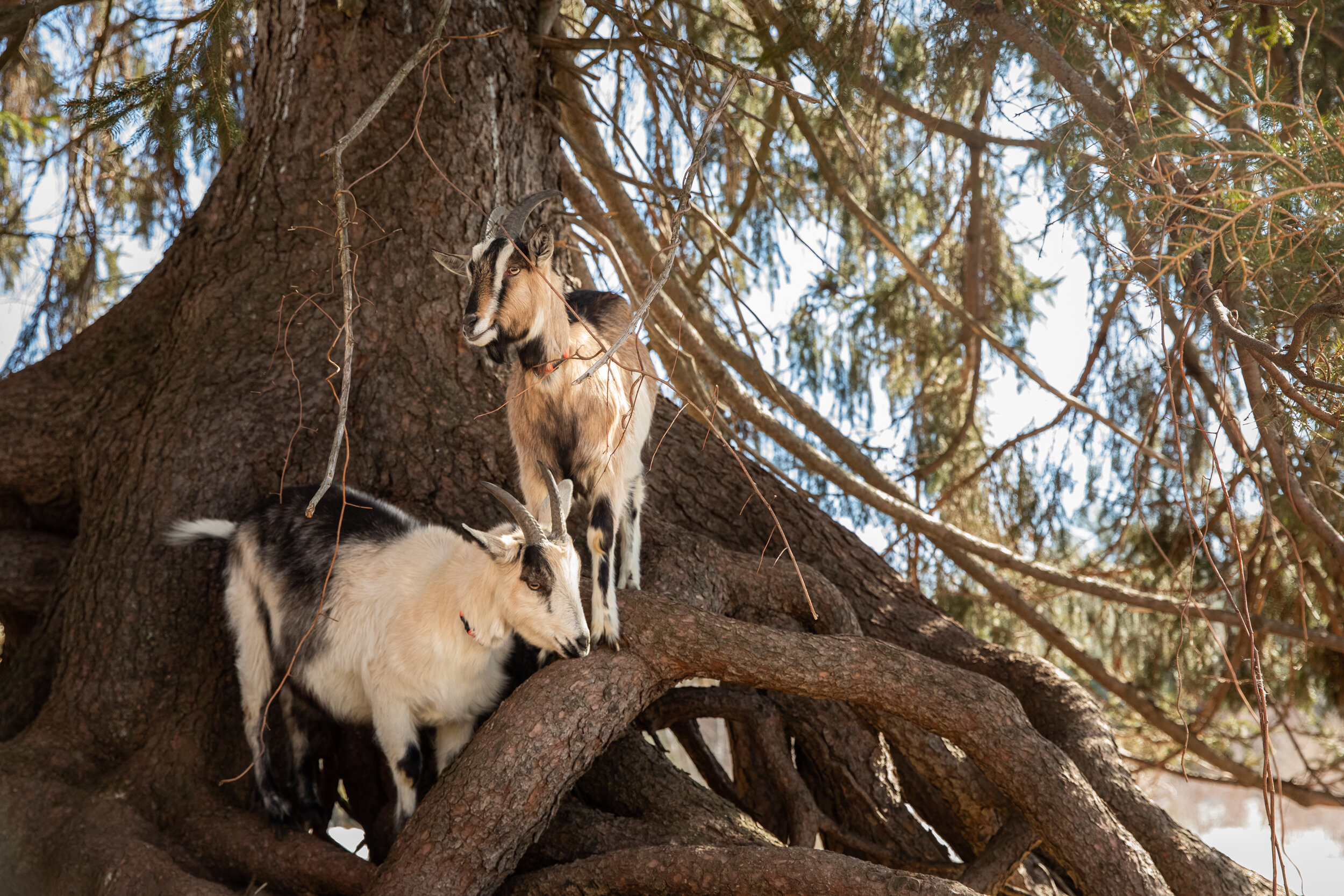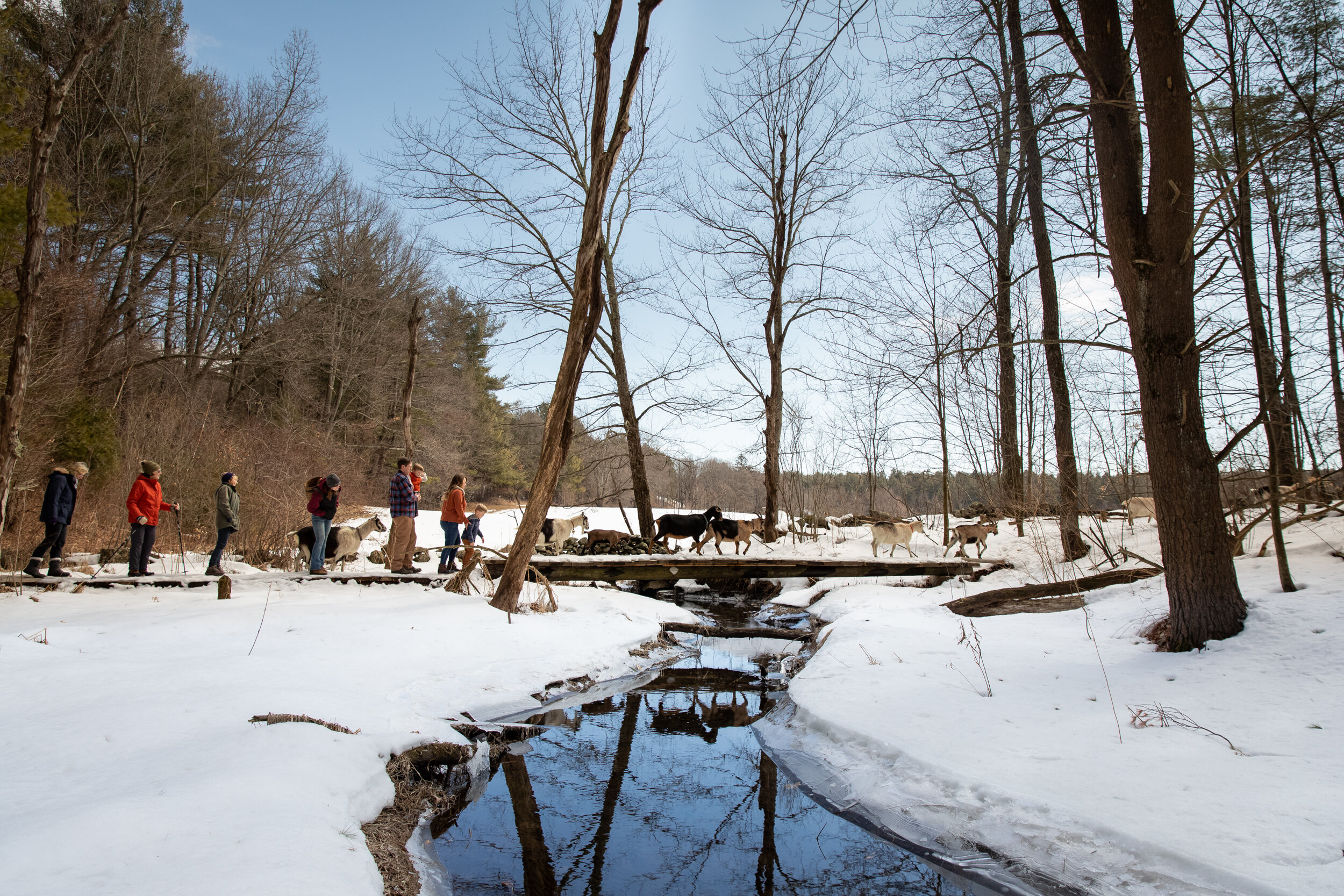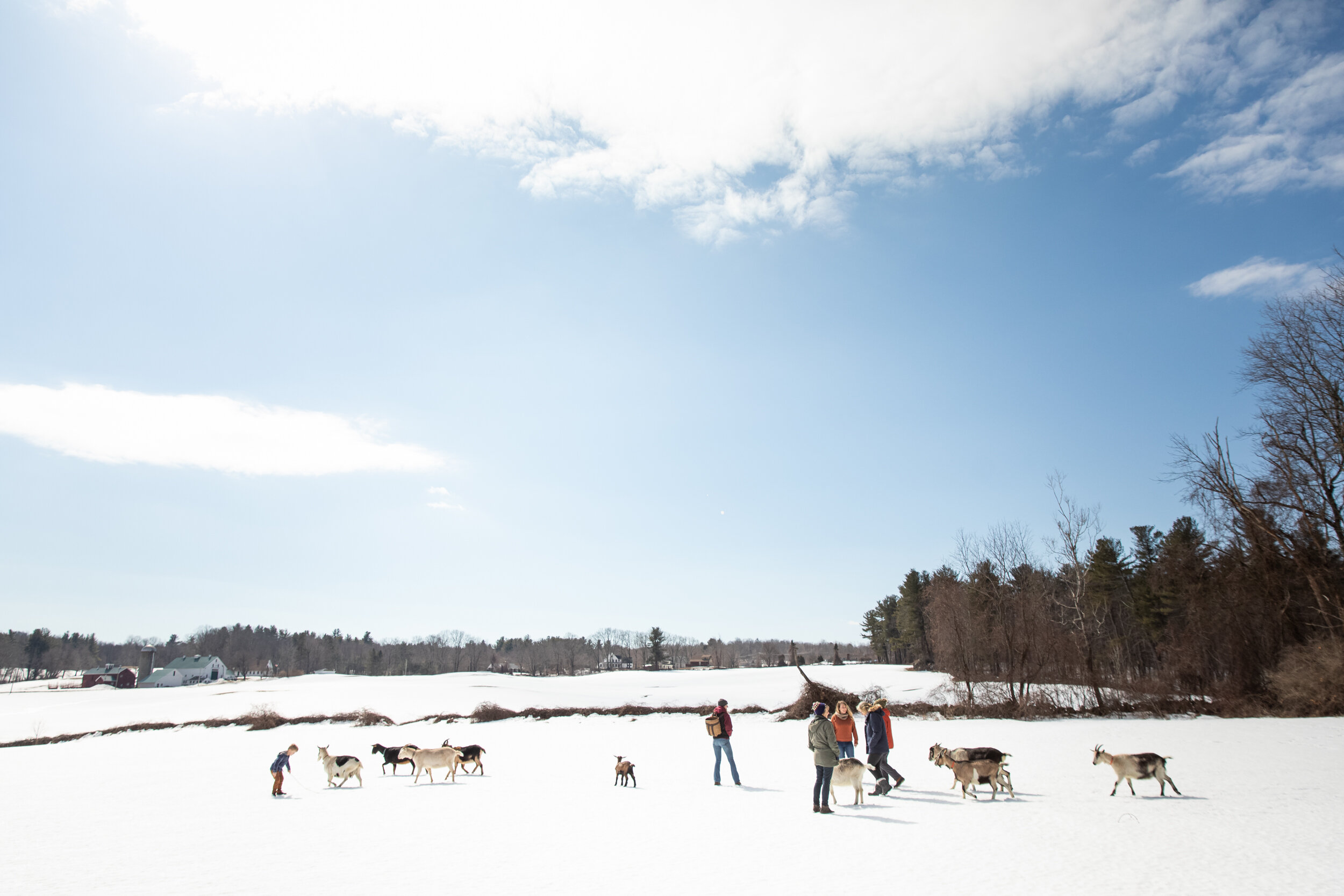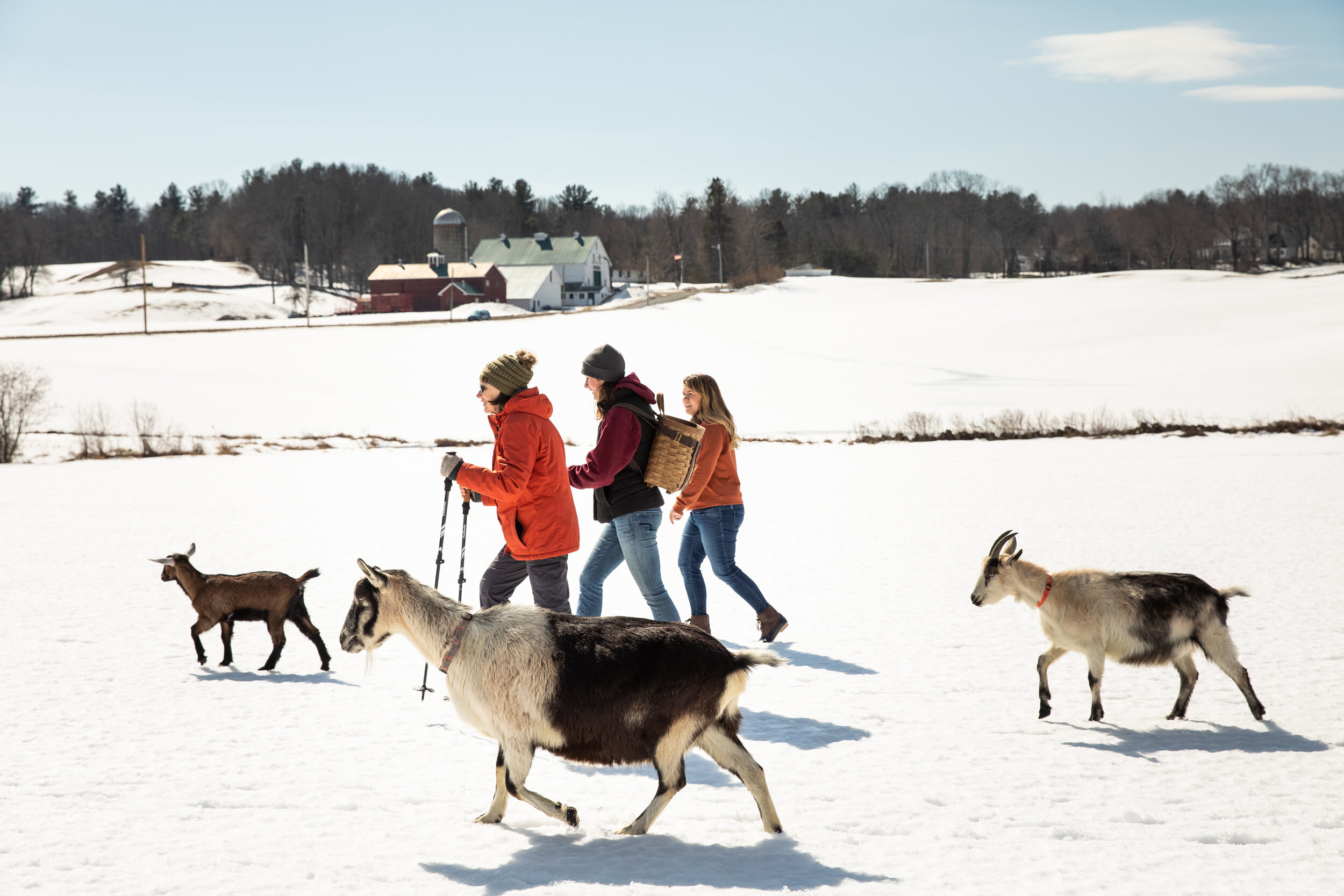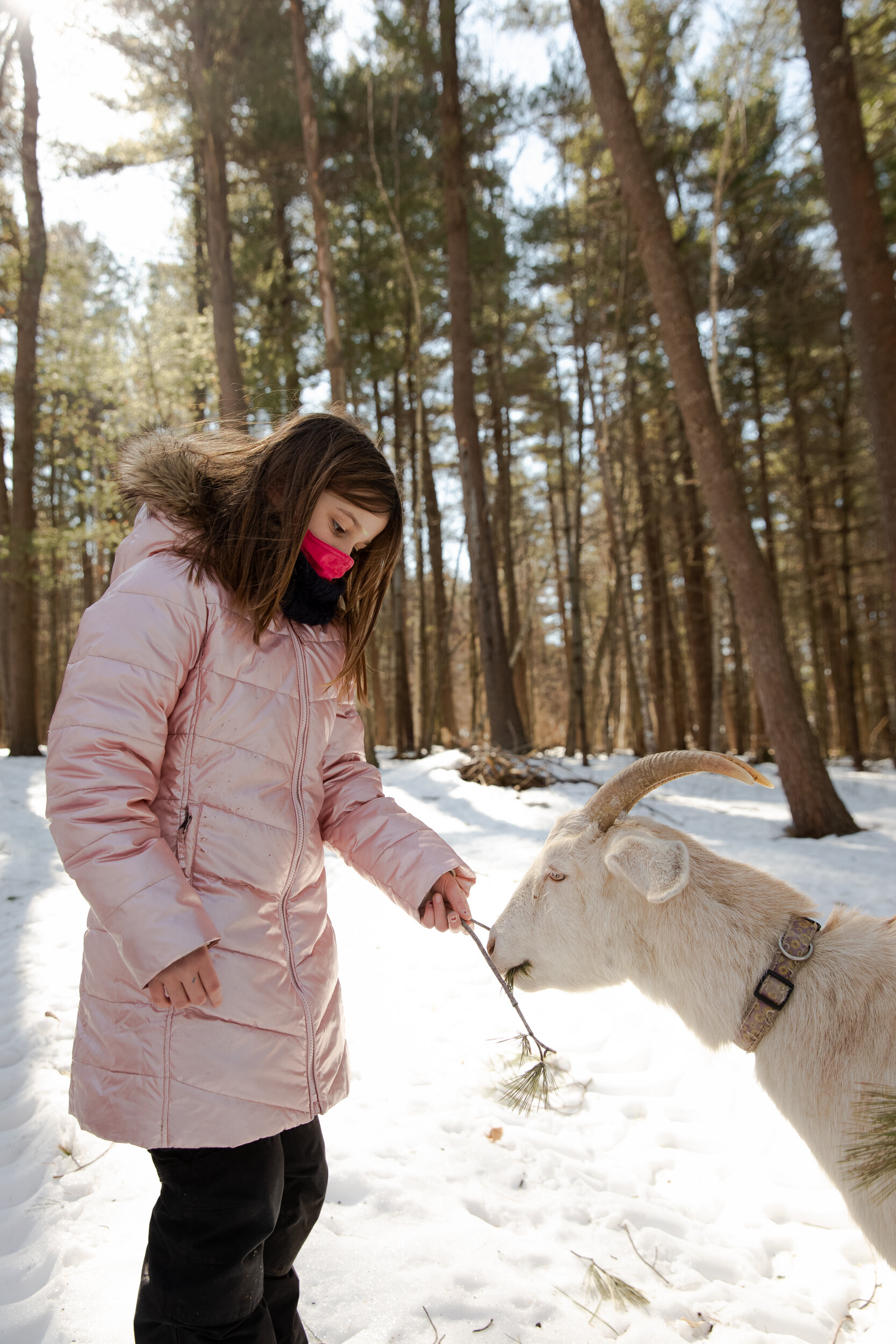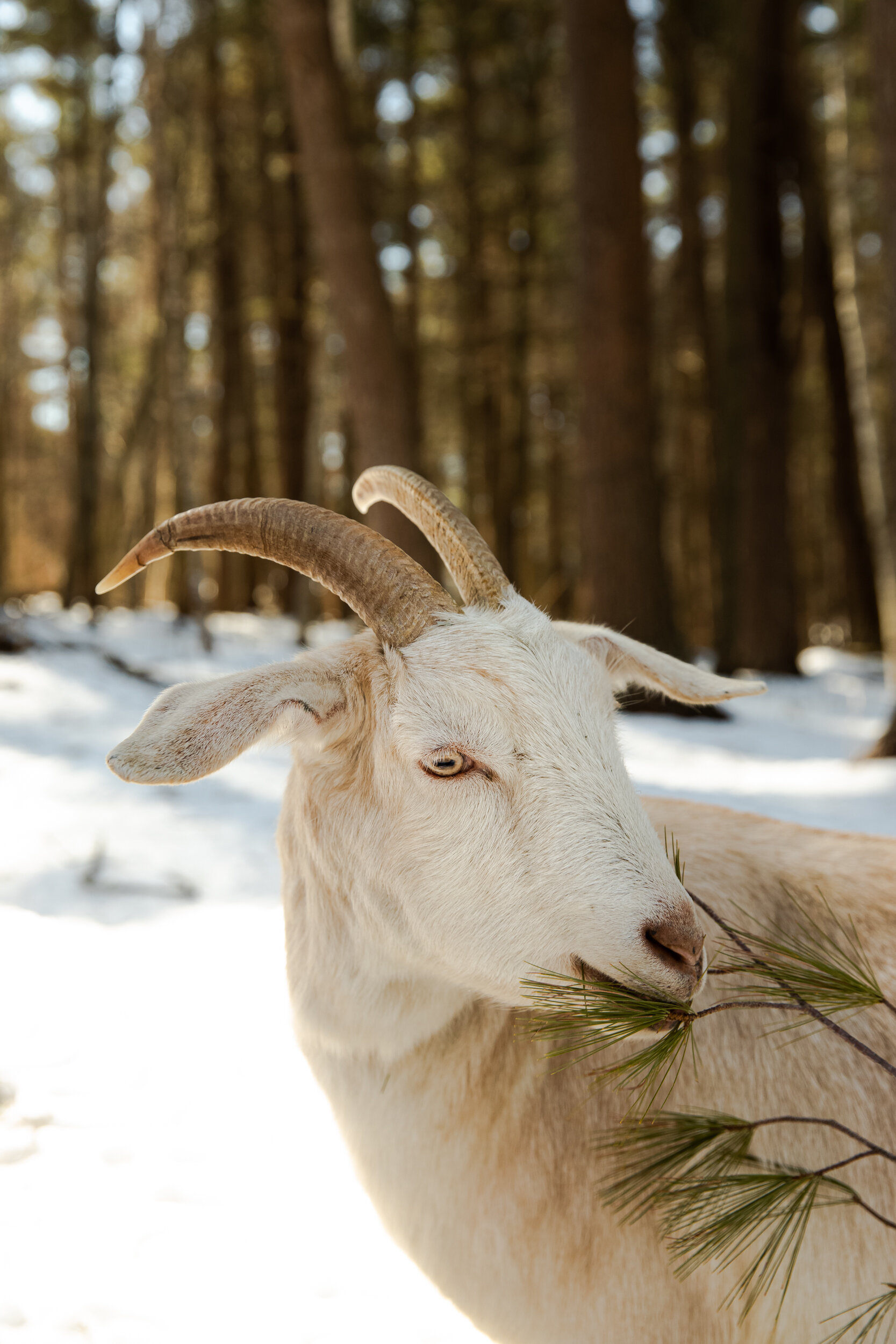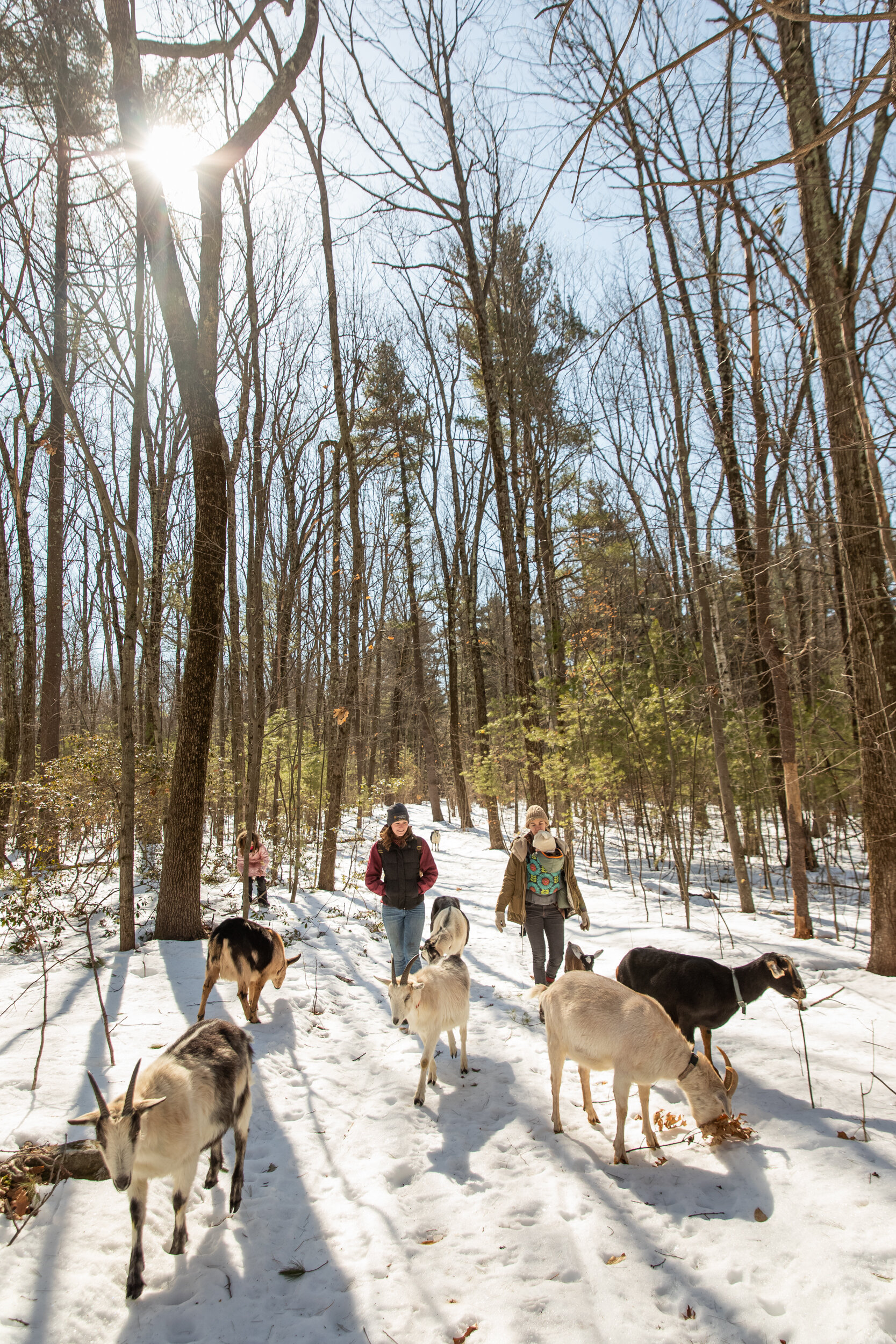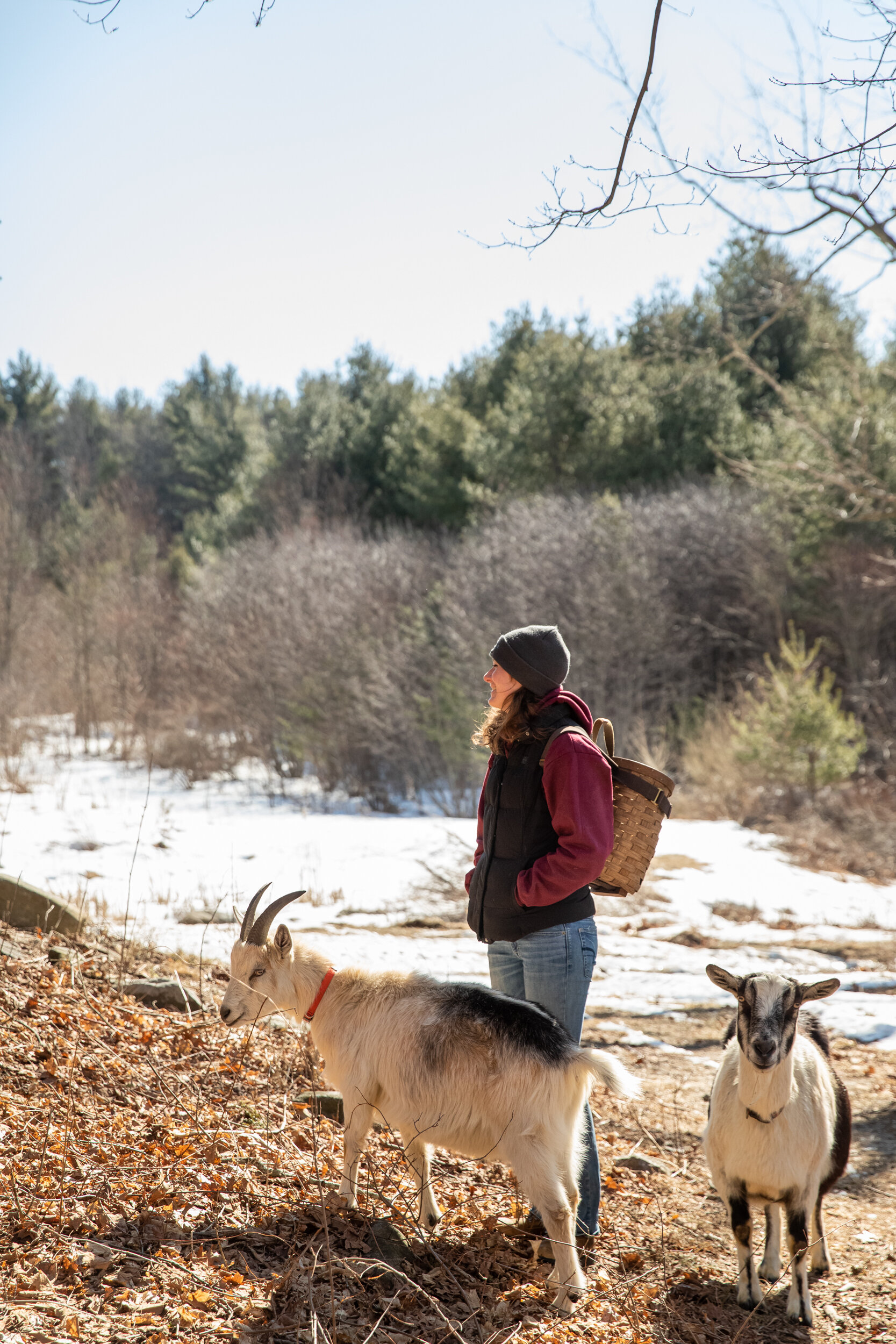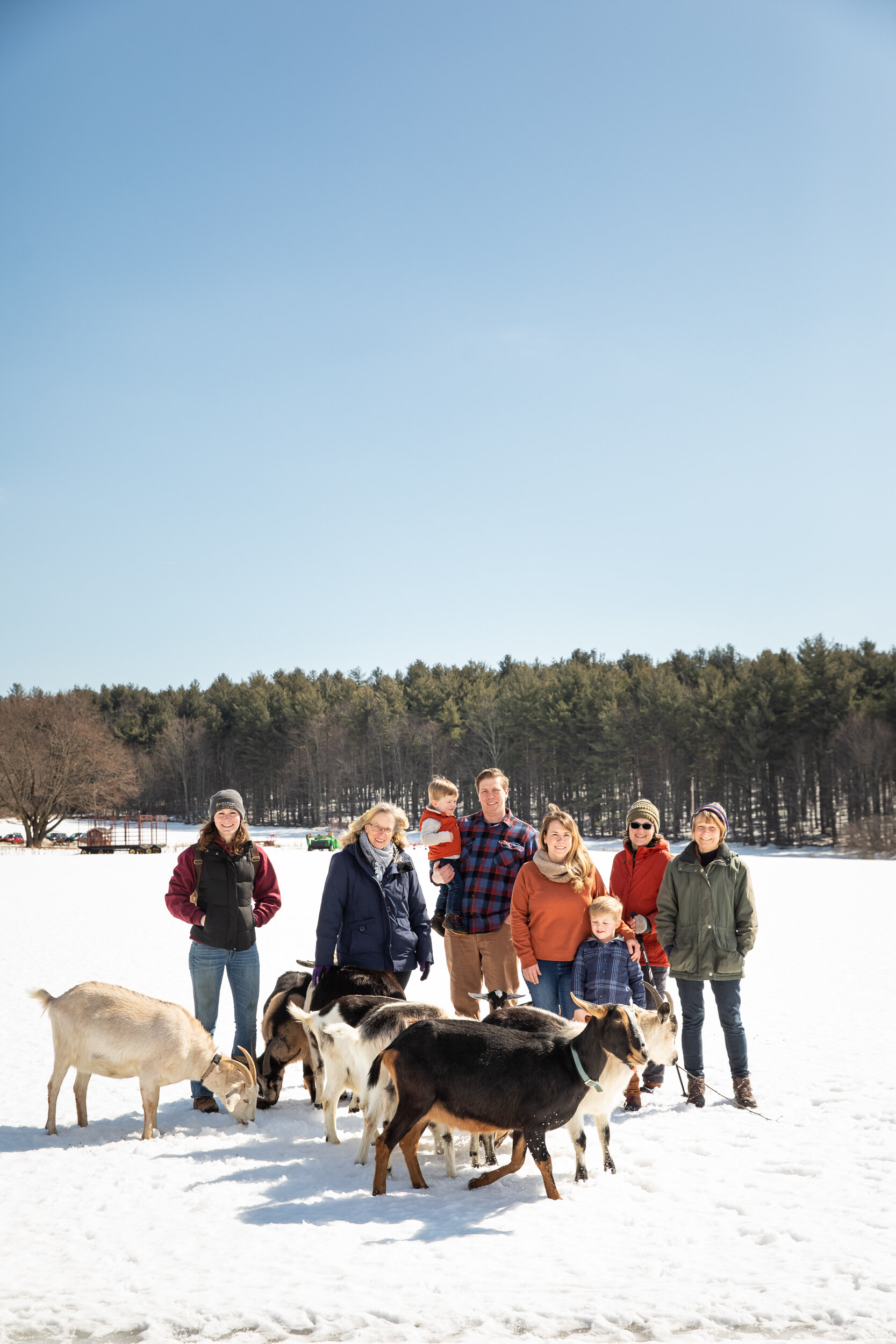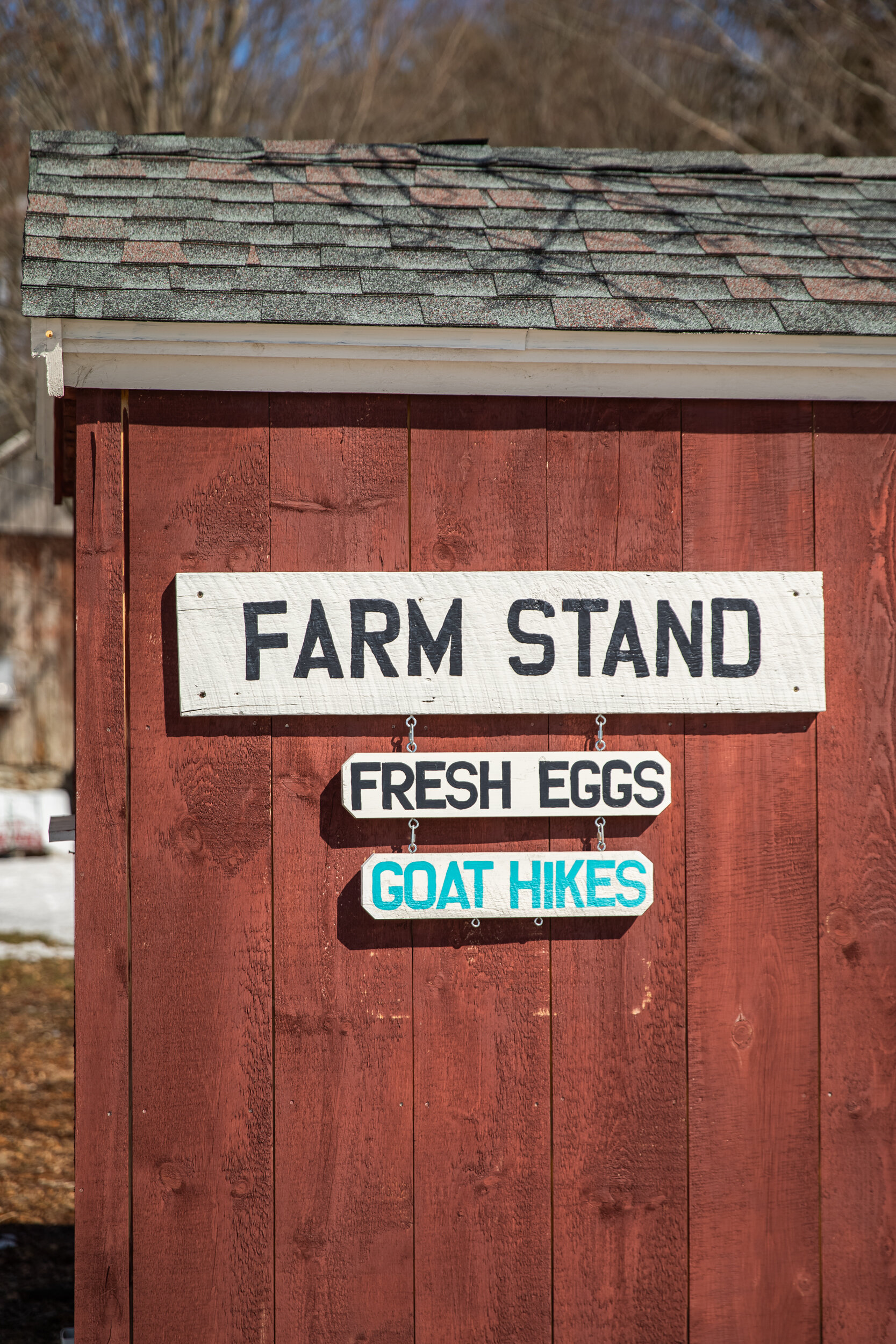A Walk With the Kids: Hiking With Goats Has People Flocking to Maplebrook Farmstead
Photos by Little Outdoor Giants
Showing your support for sustainable local agriculture has rarely been so much fun as a hike with goats at Maplebrook Farmstead in Sterling. Guided by Hannah Miller, a young, entrepreneurial farmer, the hike introduces visitors to the natural beauty of the land as well as the quirky behavior of the furry, hoofed creatures who live there.
For four generations, Miller’s family has owned the 175-acre farm that her great-grandparents bought to raise dairy cows. A generation later, when milk prices plummeted, her grandparents sold the cows; since then their pastures have become overgrown.
Miller grew up on the farm but as a child she “never liked doing anything farm-related,” she said. During high school, however, she gained a new appreciation for agriculture while working at Crystal Brook Farm, a goat dairy just up the road. Miller helped owner Ann Starbard with the goats, whose milk produced award-winning cheese. That goat cheese business has since closed. “After working for Ann, I realized I had a passion for dairy farming and wanted to carry on her legacy,” Miller said.
Graduating with degrees in animal science and sustainable agriculture from the University of Massachusetts School of Agriculture in Stockbridge in 2017, Miller vowed to be self-employed on her own farm within five years. This January, she achieved that goal a year early with the help of her goats and two large flocks of chickens.
Maplebrook Farmstead is protected under the Agricultural Preservation Restriction Program, which ensures that it will remain as a farm and not be developed for commercial or residential purposes. Much of the land is forested, but the chickens roam through several pastures, traveling in mobile houses surrounded by fencing to keep predators away. There are also three dairy cows in the menagerie of livestock that lives on the farm.
Miller runs the farm with help from her uncle, who is retired and lives in a 150-year-old farmhouse on the property. She plans to add a part-time employee in the summer.
Her original plan was to develop a herd of dairy goats, sell goat milk and eventually make and sell goat cheese. Hannah acquired her first pair of goats, Mookie and Beauty, a mixture of Saanen and Alpine breeds, from the former Crystal Brook dairy. Over the past three years she’s built the herd with a half dozen more goats from area farms.
When friends inquired whether her animals could do goat yoga classes, which have won popularity on the internet, Miller explained that the breeds were too large. “It got me thinking about having the goats help pay for their keep,” she added. Since the goats enjoyed walking with her on the farm, she cleared a few trails through the woods and along pastures and began offering hikes with her goats, via the farm’s website and Facebook page. Her Instagram pictures of adorable young goats attracted hundreds of likes.
“I was blown away by the number of people who want to go on goat hikes,” Miller said. The first hikes were successful and enthusiastic participants posted their own photos and comments. As a result, many Maplebrook Farmstead goat hikes (for groups ranging from two to 12) are promoted by word of mouth. Reservations fill quickly, but you can join a waiting list at maplebrookfarmstead.com.
I can attest to how much fun it is to walk in the woods with goats, even through piles of snow. On the day we hiked, just after a snowstorm in February, the goats trotted out of the barn, eager to romp. I was surprised at how big they are—about the size of a Great Dane. They are solid, weighing between 120 and 140 pounds. If one of these girls wants to pass you on the hiking trail, you are going to be nudged aside.
The little herd has a clear hierarchy. Snowy white Moe, though one of the younger members, is the alpha goat and she quickly funneled the others into a single file as they headed up one of the hiking paths. Orion, Ariel and Charming, named for the constellation and two Disney characters, hurried along, followed by a mother-daughter pair, Gretchen and Gina. Last in line were the eldest, 10-year-old Mookie and Beauty.
The newest member of the herd, month-old and extremely photogenic Eleanor, had just arrived on the farm and needed a little help to keep up with the older goats. Every so often Miller would pick her up like a lagging toddler. Eleanor, a mix of Alpine and Nubian breeds, will be joined by two more young kids later this spring.
On the frosty afternoon that I joined the goat hike, it didn’t take them long to detour off the path to snack at a stand of pine trees. “Evergreens are their favorite in winter,” Miller explained. Pine is rich in vitamin C and is a natural anti-parasitic. Chewing on pine branches also calms their stomachs, a benefit for the goats’ complex digestive systems. Like cows and sheep, goats are ruminants with four compartments to their stomachs.
The silky coats of Miller’s goats attest to their healthy diet. They eat greenery of all kinds. Goats are browsers rather than grazers, which means they willingly munch on leaves, vines and small bushes. From spring through fall, they will forgo evergreens to devour invasive plants like bittersweet, poison ivy and the pesky autumn olive bushes found along most roadsides and medians in the state. The hungry goats are helping restore some of the farm’s overgrown pastures.
After allowing them a few minutes to munch on pine boughs, Miller was ready to move the herd along. “Goaties!” she called and most of them galloped through the snow back to the path. Except for Beauty. “She’s stubborn,” Miller said. “She’ll come when she’s ready.” Sure enough, when we had walked a couple hundred feet, Beauty came running to catch up, surprisingly nimble for her age.
“Goats have distinct personalities,” Hannah explained. “They’re playful, intelligent and mischievous. If there’s something they want to get to, they’ll go over a wall or fence.” She noted that the goats have been known to breach the fencing around the chickens’ houses to steal a snack from their grain feeder.
The goat hikes also showcase the farm’s natural beauty and its value as a community enterprise. Maplebrook is home to a friend’s beehives and Hannah’s mother maintains a field of wildflowers. There are plans to grow vegetables this summer. Visitors to the farm can buy eggs, honey, flowers and produce as well as T-shirts, hats and sweatshirts at the farm’s little store and on the website.
The walks with goats are fulfilling Miller’s goal of connecting people to agriculture and livestock. “I want people to have an experience that goes beyond watching animals and feeding them. It’s amazing what people don’t know about animals on a farm,” she said. Her goat hikes often become a walking seminar on animal husbandry.
“Dairy farming has become villainized on social media,” Miller notes, “but my goats have a happy and high-quality life.”
The farmer would say the same for herself. She relishes what others might see as long days of farm chores and problem solving. “One of my favorite things about farming is the do-it-yourself aspect. You can’t find answers on Google to problems that arise on a farm; you have to try and figure it out and see what happens,” Hannah explains. “Every day I learn something new. I have the best life I ever could have hoped for.”
This story appeared in the Spring 2021 issue of Edible Boston and Edible Worcester.

